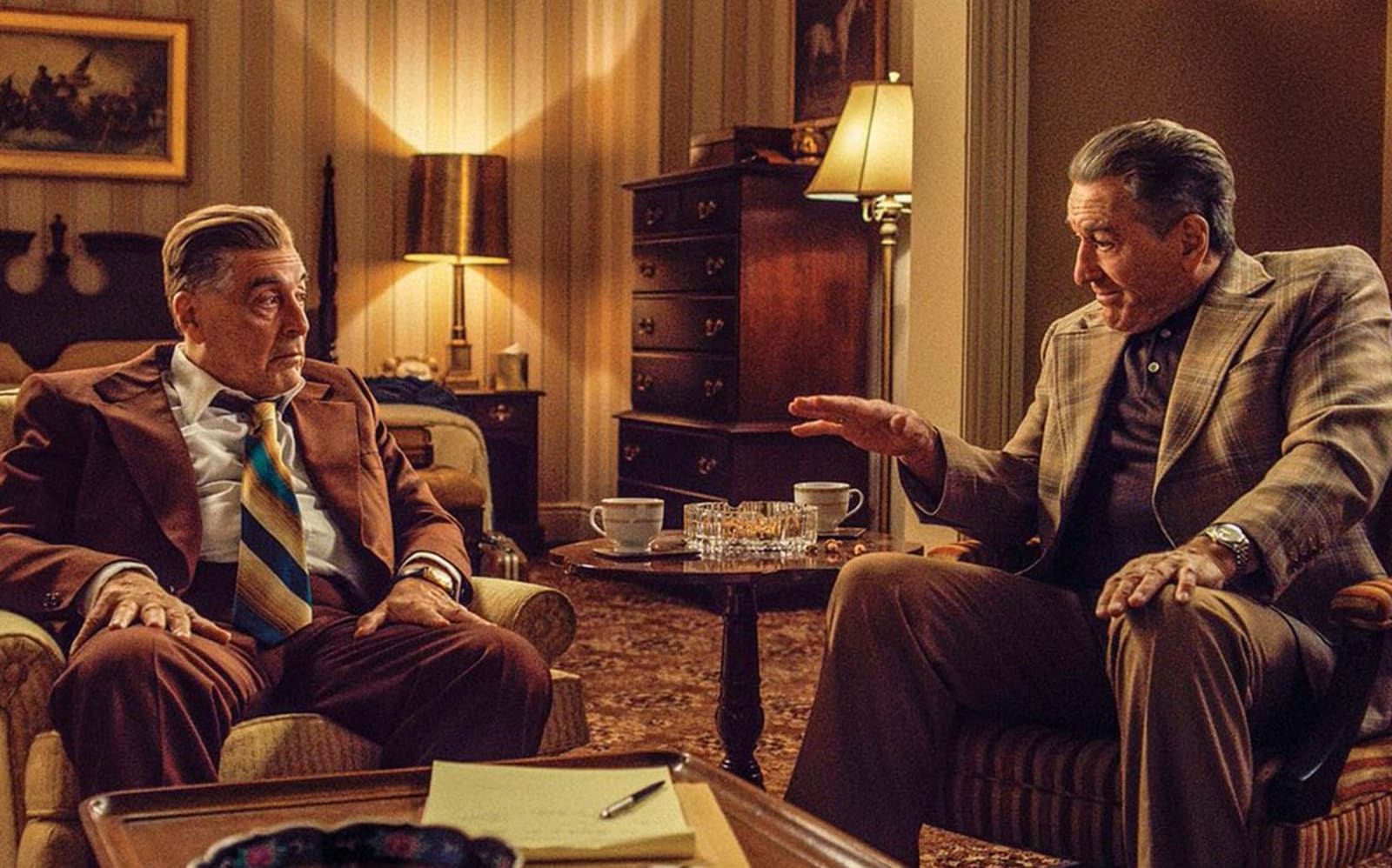Featured image from Guilty of Romance
My primary aim in putting this retrospective together was honesty. There are tons and tons of aggregate lists going around from various large publications and critical institutions, and most of them are similar to each other and very boring. Aggregation is boring. It irons out distinctness and pretends to objectivity when really it’s a nexus of groupthink and echo chamber effects. I don’t want to read critics polls, I want to read subjective lists from individual people. The quirks and eccentricities of a particular person’s taste are far more interesting to me than the lowest common denominator.
It’s in this spirit that I approached this list. I didn’t put anything on here because I felt like I was supposed to or because it has perceived consensus status or because I expect people would think better of me if I pretended to like it. Nor did I omit anything for any such reason. I did my best to pick the things I honestly like. The first half is a ranked list of my 50 favorite movies this decade. If something’s not on there, either I didn’t see it or I didn’t like it as much as these movies. The second half is an unranked list of 50 honorable mentions, diversified by genre.
Common reaction to lists of this sort include:
“But how could you not pick my own favorite?!”
“Pfffff this dumbbell doesn’t even have Fury Road.”
“Aren’t lists like this supposed to include Moonlight?”
Feel free to react like this, but I don’t think it’s likely that I’m wrong about anything on this list, because it is a list of things that I personally like and I feel like I have a good handle on that.
Part of what I enjoy about writing lists like this one is the chance to revisit old opinions. Especially when one really loves a film, it’s a shame to see it once, form an opinion of it, and then file it away and never return to it. For each film on the list and many others, I considered how well I remember it and how sure I am of what I think of it. I revisited anything I was foggy or unsure about. It was very rewarding! It all felt worth another look, even if the result was that I liked some things less than I thought I did. A number of titles dropped off the list while a number of others jumped closer to the top.
My viewing in general was reasonably comprehensive. I’ve seen most of the stuff that’s shown up on other decade lists. The only filmmakers who I really wanted to catch up on but failed at were Frederick Wiseman and Wang Bing (both of whom made quite a few very long movies this decade). I also haven’t seen a number of significant films from 2019 that I don’t yet have access to.
I think it was a pretty great decade overall, though maybe not so great for American cinema. And alas, it was a terrible decade for my beloved horror genre–probably the worst decade in horror since the 50’s. (Though I guess it was a great decade in horror from the point of view of people who don’t generally like horror, as my big problem was that most horror was toothless and aimed at a crossover audience.) The most notable trend that I notice on my list is that I went for a lot of digital movies that embrace their character as digital. Digital is often for the worse when it’s used as a cheaper approximation of film. But there are things that one can do with digital photography that one can’t do with film, and many of my favorite movies of the decade were ones that exploit the unique capabilities of digital photography and foreground their digital character rather than trying to hide it.
Top 50
1) Mysteries of Lisbon (Ruiz, 2010)

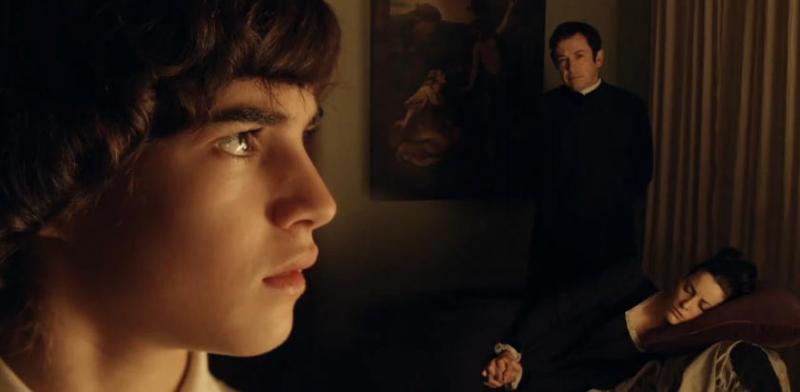
Staggering. Ruiz made two films that seem to summarize his formal and thematic interests: this and Love Torn in a Dream. It’s fascinating that these two works fal at absolute polar extremes of his stylistic range. LTIAD is his densest and most frenetic film while this is his most languorous and elegant.
It’s built out of the materials of the 19th century novel: multi-generational webs of causal entanglement tied together by the sorts of coincidences that suggest that destiny has an aesthetic sensibility. Ruiz’s fantastical approach gradually sheds any novelistic sense of realism and reveals a foundation of dream logic. Mysteries of Lisbon finds the common ground between Manoel’s Destinies and Time Regained.
At the level of image and sound, light and shadow, this is pure, distilled essence of Ruiz. Four and a half hours of intoxicating cinematic bliss. The first time I saw it I was so enchanted that I watched it again the very next day. I’ve gone back and revisited it a few times and I’ve felt even more enamored with it each time.
2) Blackhat (Mann, 2015)
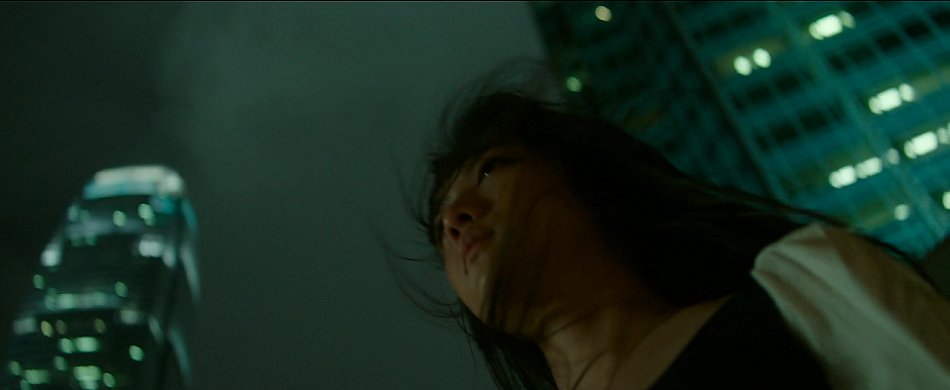


No American film from this decade comes anywhere close to Blackhat for me. I don’t even know how many times I’ve watched it, but it has to be at least fifteen. The film makes absolutely stunning use of digital cinematography, and at the same time thematizes the materiality of the digital. Day to day, we experience the internet as a rarefied, disembodied presence. Blackhat emphasizes the physical groundedness of every aspect of cybercrime: the hacker as flesh and blood, hacking as infiltrating a physical system, the physical realization of the consequences. Casting Chris Hemsworth as the lead was a stroke of genius. The physical bearing of the ex-con is an important trope in Mann’s cinema, and I don’t know if any of his leads have nailed this sort of wary guardedness as well as Hemsworth does here.
But I think the best way to explain why I love Blackhat so much is just to direct you to this epic Michael Mann supercut. Blackhat isn’t in it, but if you know the film well you can see exactly which moments would have been included.
3) Like Someone in Love (Kiarostami, 2012)


When we see are sitting in the garage seeing Noriaki through three car windows while two different mirrors pointing behind us obliquely suggest the outside world, that might be peak Kiarostami. The Iranian master’s second international production (French-Japanese, in this case) is about a sort of love triangle between a young student moonlighting as a prostitute, an elderly professor who hires her for a night of asexual companionship, and her violently jealous boyfriend. It contains many of his most distinctive tropes and themes to an extreme degree: subjective experience of time, extraneous information, frames within the frame, looking in from the outside, looking out from inside, disorienting pairings of sound and image, oblique reflections, failures of understanding across social boundaries, the various roles of women in a patriarchal society, and of course, endless driving.
4) A Woman’s Revenge (Gomes, 2012)


I get goosebumps just thinking about this movie. On the one hand, it is a triumph of classical mise-en-scène. Evoking Rivette, Resnais, and Oliveira in various respects, the staging is so refined and sumptuous that I can barely contain myself. A bored man of leisure accompanies a beautiful woman (Rita Durão) home, ostensibly for an evening tryst. But then she drops the fucking axe and this becomes an absolutely searing excoriation of a world (and a world cinema) that sees women in terms of their relations to men. Rita Azevedo Gomes has a new film, The Portuguese Woman, which I have not been able to see yet, but the just looking at the trailer suggests that it’s a formidable work.
5) Mountains May Depart (Jia, 2015)
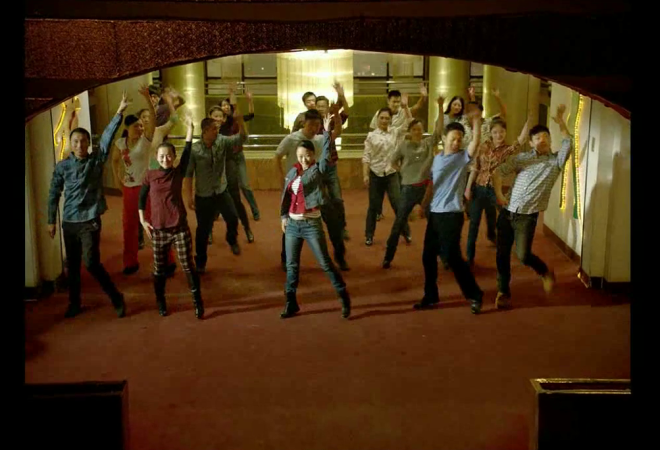
No one working in film today surpasses Jia Zhangke in formal precision and efficiency. The micro level both instantiates and allegorizes the macro themes. Every shot, every cut, every use of music reflects a unified vision and meticulous attention to detail. For the connoisseur of controlled, exacting filmmaking, Jia’s cinema is a feast.
All of Jia’s films are about rapid economic and cultural change in China. Mountains is a triptych of stories about a woman in Fenyang (Zhao Tao) and her family, set in 1999, 2014, and 2025. There’s a veneer of realism, but it’s disrupted by jarring moments of surrealism. The shifts in time are matched by shifts in cinematic style. The aspect ratio gets progressively wider as the characters become more distant from each other. The jump to the bizarre and critically divisive third section, where Jia’s style leaps 10 years into the future, is the most exhilarating cinematic moment of the decade for me. The first time I watched the movie, I was standing bolt upright in the middle of my living room talking to myself: “Whaaaaaaaaat?! Fuuuuuuuuuuuuck!”
One other note: while nearly everything about the characters’ lives changes between the film’s three segments, the one repeating element is that Zhao Tao’s character makes dumplings. While it is a pessimistic film overall, the suggestion that food traditions can be a way for individuals to preserve cultural value through massive social transformations is very resonant and moving for me and reminds me of this short that Jia shot on an iPhone.
6) Certified Copy (Kiarostami, 2010)

The film begins with writer James (British opera singer William Shimell) giving a talk in Tuscany about authenticity and arguing that a copy can be just as good as the original. He spends the afternoon with a French antiques dealer Elle (Juliet Binoche), who he has ostensibly just met. Over the course of the film, their relationship abruptly transforms in surprising, surreal ways that relate to James’ theory of authenticity. For me it is a miraculous film, entrancing to watch and fascinating at every level. So much has been said about it already that I just want to call attention to one aspect that doesn’t get as much attention: the acting. Shimell, in his first screen acting performance, is marvelously abrasive. Binoche’s range here reaches from the shyest seduction to the most withering fury. I don’t know if any film more fully showcases her talent.
7) Ash Is Purest White (Jia, 2018)

Ash is Purist White is in some ways a sister film to Mountains May Depart. Both follow Zhao Tao through recent Chinese history and both are about living through rapid change. While Mountains is the bolder, more ambitious film, Ash exhibits even tighter integration of formal and thematic elements. It is essentially a gangster movie, but takes the perspective of the gangster’s moll. When her beau is threatened by young upstarts, she makes a fateful decision that lands her in prison. Most of the story follows the events after she is released five years later. While the film evokes Hong Kong crime cinema in various ways (e.g., the use of the theme music from John Woo’s The Killer), I take it to also be closely connected with Japanese postwar yakuza movies. A very common theme of these Japanese movies is the way the economic desperation of the postwar era was instrumental in destroying traditional codes of honor. Old guard yakuza essentially had nothing protecting them except for these codes, which were cast aside as the starving younger generation usurped power. In Jia’s film, the same dynamic is driven not by economic desperation, but by rapid growth. It is the westernization of China—a sort of cultural atomic bomb—that destroys the old codes of honor.
Throughout the film, Jia uses digital cameras that would have been available at the time the action takes place. The one exception is the prison section, which is shot on film, suggesting timelessness. While the shifting digital photography conveys the passage of time, the film interlude suggests that time stood still for the character during her five years of incarceration. When she is released into a changed world, she navigates it the only way she knows how: as a jianghu gangster who lives outside the law but respects an increasingly outmoded code of honor. It should also be mentioned that Ash is Purest White is a very funny movie, especially as it follows the cons and hustles the protagonist deploys in her quest to get home.
8) Horse Money (Costa, 2014)


Perusing reviews I saw a lot of remarks like “don’t try to understand it, just let it wash over you.” This is pretty much always a bad take, but especially here. This movie is about something extremely specific, and one really needs a basic background understanding of the history of Cape Verde, the Fontainhaus neighborhood, and the Carnation Revolution to be able to situate it. Ideally, one also would have previously seen Costa’s Fontainhaus trilogy.
Horse Money feels like Straub-Huillet in purgatory, and the alternating use of abstract institutional spaces and near total darkness is mesmerizing. The two leads, Ventura and Vitalina Varela, are the most unforgettable performers to appear in any film this decade. There is also a companion film titled Vitalina Varela that I haven’t been able to see yet.
9) High Life (Denis, 2018)


It’s odd to see a Claire Denis movie without Agnès Godard’s cinematography, but I think Yorick Le Saux does a great job (he’s previously worked with Assayas and Ozon, among others). It certainly looks different from other Denis films, but the look suits the coldness of the production design. By the way, Denis totally read Foucault on prisons when thinking about the set design.
What most interests me about High Life is the way Denis orchestrates an emotional experience. Now, it’s not an emotional experience you’re necessarily going to want to have. I’m personally very interested in negative emotional responses to art, and I’m partial to art that disturbs me to the core. This is definitely that. I spent a couple hours aimlessly wandering the streets of Vancouver after a 10pm screening and then it chased me into my nightmares and hung around in the pit of my stomach for several more days.
Leading theories of disgust suggest that the emotion is an evolved response that alerts us to potential pathogens. This being the case, it makes sense that our reflexive response to the bodily fluids of strangers is typically disgust. Denis deploys copious bodily fluids throughout High Life to push the audience’s emotional buttons. There are few films outside of gross-out comedies and gory horror movies with this quantity of blood, semen, urine, and breast milk. The nonstop deluge of bodily fluids synergizes with the sublime creepiness of Juliet Binoche’s Medea-in-space and the ickiness of her reproductive experiments. The film achieves a sort of monotone of medical bleakness that lulls the audience into complacency only to set us up for some very aggressive catharses. I can’t think of another recent film that goes to such lengths to make the audience feel things that they surely would rather not feel. I’m 100% here for it.
10) Welcome to New York (Ferrara, 2014)
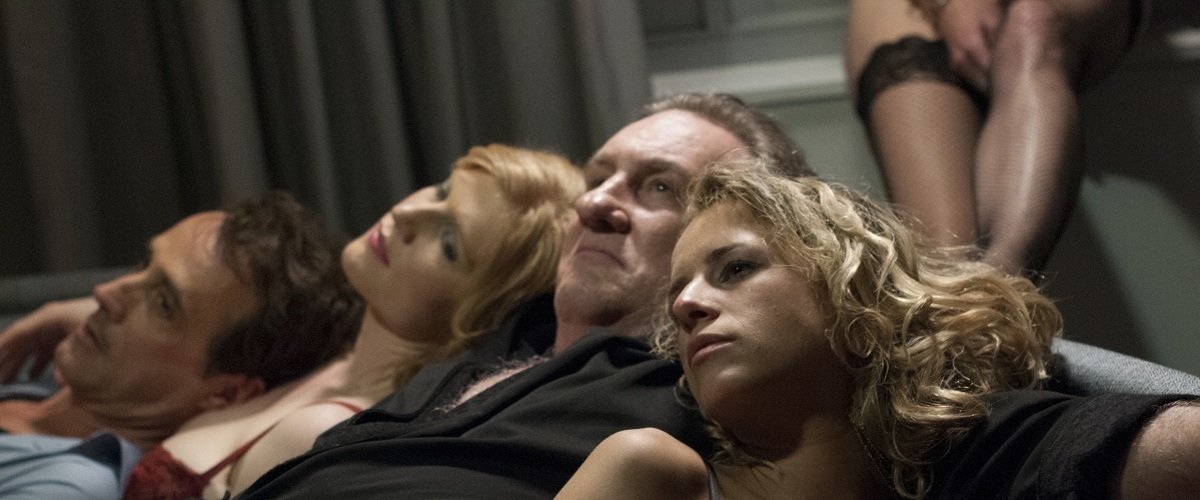
“Bouillabaisse is like a sex party of the fish.”
Warning: the version of this released in the US was censored (20 minutes cut out) and should be avoided at all costs (Ferrara was adamantly against the cut version being released). There are European blu-rays with the correct 125 minute cut. Since cutting the film was an unforgivable betrayal, I think one would be entirely justified in resorting to internet shenanigans to see the proper version.
This is THE movie about the psychopathy of the global elite and my pick for the Zeitgeist film of the decade. Gerard Depardieu is absolutely revolting as Dominique Strauss-Kahn. He’s like a walking embodiment of the global finance system. It’s such a vile performance that Ferrara starts the film with a non-diegetic scene where Depardieu dissociates himself from the character. The movie has a genre-hopping three act structure: softcore porn, police procedural, and chamber drama. The most haunting moment is perhaps the brief glimpse we get of a very small group of protestors—women of color, easily ignored. This was still more than 3 years before #metoo. The amplified echo of that moment in our real world history is part of what makes this movie resonate so ferociously. And then there’s Jacqueline Bisset as Strauss-Kahn’s billionaire wife. She is at least as chilling as he is disgusting. Her rush to replace the art in her husband’s luxury prison and what she ends up replacing it with (revealed after a stunning fourth wall break) is just mind-blowing.
11) The Mule (Eastwood, 2018)

The Mule is a total banger. The premise is drawn from a true story: a 90 year old horticulturist Earl Stone becomes a top cartel mule. At the surface level, it’s a film about white privilege. Being an old white guy is like a superpower. You can just walk right by the cops carrying the drugs and they won’t even see you. Anyone who has written Eastwood off as a partisan hack will be surprised by how confrontationally he depicts law enforcement mistreating nonwhite people. By the way, I have heard several complaints about the scenes in the movie where Earl says casually racist things to nonwhite people. Some people think that these scenes are themselves racist. I find this interpretation so silly that it’s hard for me to seriously respond to it, but nonetheless: c’mon! The point of these scenes is that an old white guy can do or say whatever he wants and the world will extend him deference by default. The relevant scenes reveal the way that nonwhite people give feel awkwardly obliged to give casual racism from an old white guy a pass: he’s just an old white guy, what else can you expect?
But The Mule is not just a sociopolitical commentary. It’s also Eastwood’s most personal film in a long time. Horticulture is a thinly-veiled stand in for filmmaking, and Earl is a thinly-veiled stand in for Eastwood himself. He confronts his greatest regret in life: losing his family. Eastwood cast his actual daughter as Earl’s daughter who hates his guts. Dianne Wiest brings down the fucking house as his ex-wife. Nothing made me cry harder this decade than her big scene. It’s not even close.
12) J. Edgar (Eastwood, 2011)
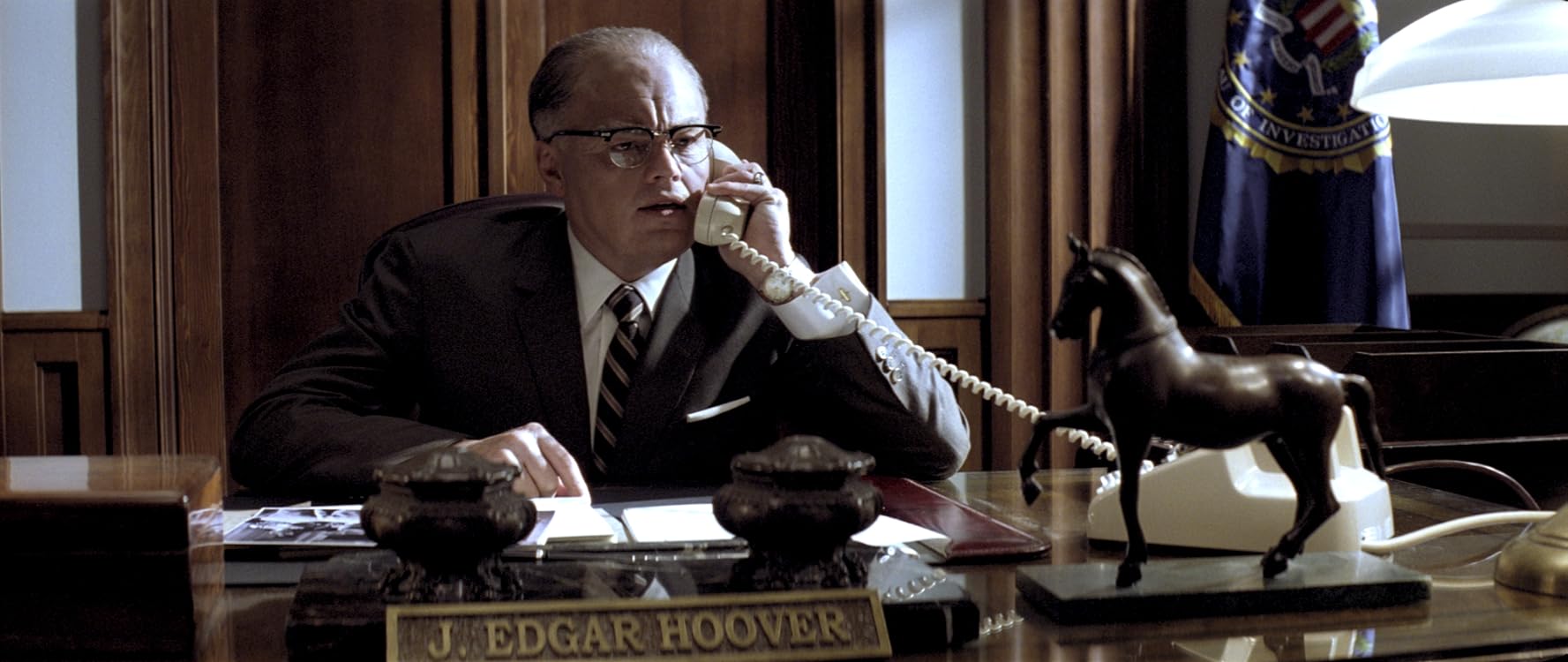
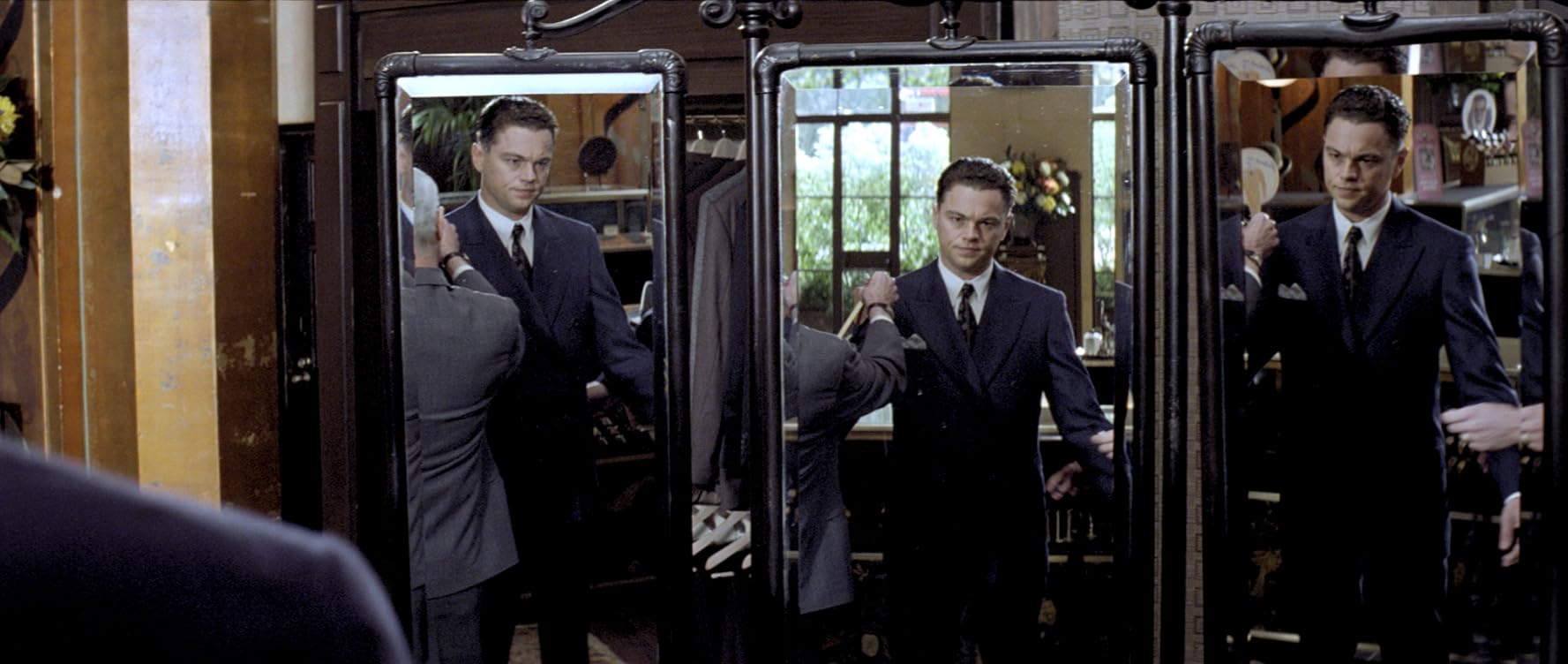
My pick for the most undervalued film of the decade. It’s an unqualified masterpiece and one of Clint’s greatest accomplishments of mise-en-scène. The lighting is stunning throughout. The theme of the duality of the individual is so strongly emphasized by the lighting that it doesn’t even need to be alluded to in dialogue or narration (and if it had been alluded to it would have come across as heavy-handed).
This is one of many cases in Eastwood’s filmography where he manages to achieve an ambivalent outlook on a subject that a lesser filmmaker would have used as a punching bag. It’s a marvel how masterfully Eastwood and writer Dustin Lance Black balance a critical stance towards Hoover with bottomless compassion. For context, Black also wrote Milk and is a notable gay rights activist who was involved in getting California’s Proposition 8 overturned. Hoover’s repressed homosexuality is the film’s primary interest, though this theme mostly stays just beneath the surface and is only really foregrounded at the end.
The organizing hypothesis of the film is that the entire fucking FBI is an externalization of Hoover’s repressed sexuality. All of the identical, clean-shaven, precisely groomed agents in matching black suits with perfectly toned abs underneath? Narcissism. Ever more sophisticated surveillance techniques and curtailments of the fourth amendment? Voyeurism.
Meanwhile, Judy Dench is an exquisite mommy-from-hell and possible blueprint for Beatrice Horseman. J. Edgar’s futile quest for her approval transforms into a quest for the nation’s love and adoration…which is not forthcoming, because outlaws are far more romantic than cops. Another central concern of the film is the way Hoover’s craven need to be adored shaped the FBI’s midcentury public relations campaign, which was characterized by a very loose relationship with the truth. This is no doubt a comment on Hoover’s legacy and the present day FBI, taken up again in Eastwood’s recent film Richard Jewell.
Where the film ends up, though, is at a place of compassion for Hoover and his lifetime of self-denial. J. Edgar is perhaps the saddest American love story since Eastwood’s The Bridges of Madison County, and the garish aging makeup used on Leonardo DiCaprio and his would-be lover Armie Hammer suggests the scarring and wear of decades of repression.
13) Romancing in Thin Air (To, 2012)

No movie from this decade manifests a more profound belief in the power of cinema. It’s a love story between two broken people (Louis Koo and Sammi Cheng!) hiding from the world way up in the mountains—a jilted famous actor and a woman whose husband has gone missing—and you better believe it made me weep. It’s one of the greatest films of all time about the feedback loop between art and life.
14) You Ain’t Seen Nothin’ Yet (Resnais, 2012)

The ultimate late work. The setup is that a playwright has died and left instructions to summon famous French actors who appeared over the years in performances of the playwright’s Eurydice to watch and evaluate a recording of a young theatre troupe’s new staging of the play. As they watch, the actors slide into their old roles, which they are in some cases no longer anywhere close to the appropriate age for. I don’t even know how to express how much I love this film; it’s so much more magical than any description could possibly convey. It has the full weight of life.
15) A Touch of Sin (Jia, 2013)

Both the English and Mandarin titles (the latter translates to “heavenly fate”) suggest the wuxia genre. A Touch of Sin uploads various tropes from the wuxia genre into a quartet of stories (based on true events) about violence as a response to ways that global capitalism is reshaping China. The four segments each have a distinct visual style that is adapted to the four different locales. I really appreciate the way that Jia declines to moralize about the violence depicted and instead focuses attention on the context from which it emerges.
16) The Turin Horse (Tarr and Hranitsky, 2011)
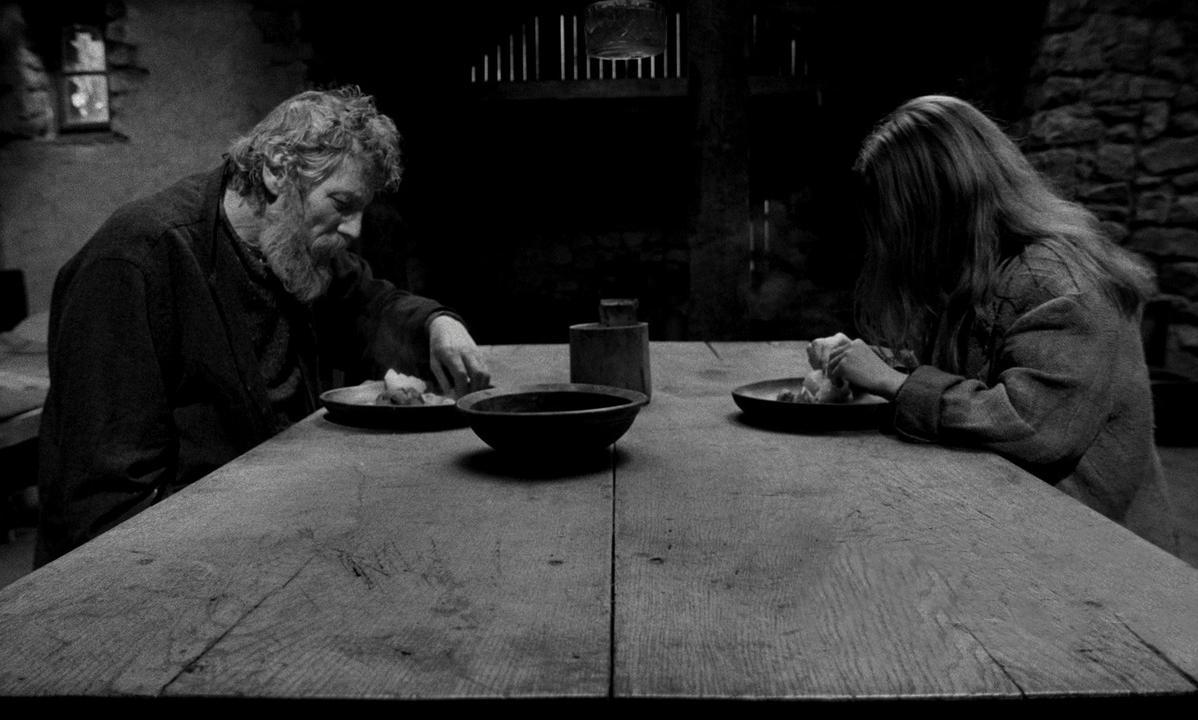
Jeanne Dielman if the intended audience were disgruntled horses. I’m here for it.
17) The Other Side of the Wind (Welles, 2018)

It’s hard to know what to do with this one. A legendary lost work from one of the medium’s greatest artists has finally been released in a compromised form, but the relevant compromises are actually highly appropriate to the subject matter. It’s intimidating, difficult, maddening, fiery, and essential.
18) Knight of Cups (Malick, 2015)

Malick’s Antonioni movie. I rank this above the next two only because it’s more enigmatic and I have less of a grip on it, and so it’s the one I feel the strongest impulse to continue to watch over and over again. I know that a lot of people don’t like late Malick. We are going to have to agree to disagree. It’s not a close call for me. I can tell that these movies are great just by looking at them. The proof is right there on the screen. They are both immediately pleasant and endlessly rewarding.
19) Song to Song (Malick, 2017)

Malick’s Faust. It’s arguably the purest Malick movie, and so the one that I expect haters to hate the most. Parts of it might seem a bit saccharin, but I’ve found that thinking of it as Faust really helps.
20) The Tree of Life (Malick, 2011)

A grand cinematic response to the problem of evil and part of what I see as an informal trilogy pairing events from Malick’s life with spiritual themes (To the Wonder: his marriage to a French woman/God’s silence; Knight of Cups: his unproductive period/sin and decadence; Tree of Life: his brother’s death/the problem of evil). I regret watching the extended cut on the Criterion DVD (which is an alternate cut, not meant to supersede the theatrical cut). It tries to balance Brad Pitt’s performance with Jessica Chastain’s and this totally ruins the movie.
21) 24 Frames (Kiarostami, 2017)
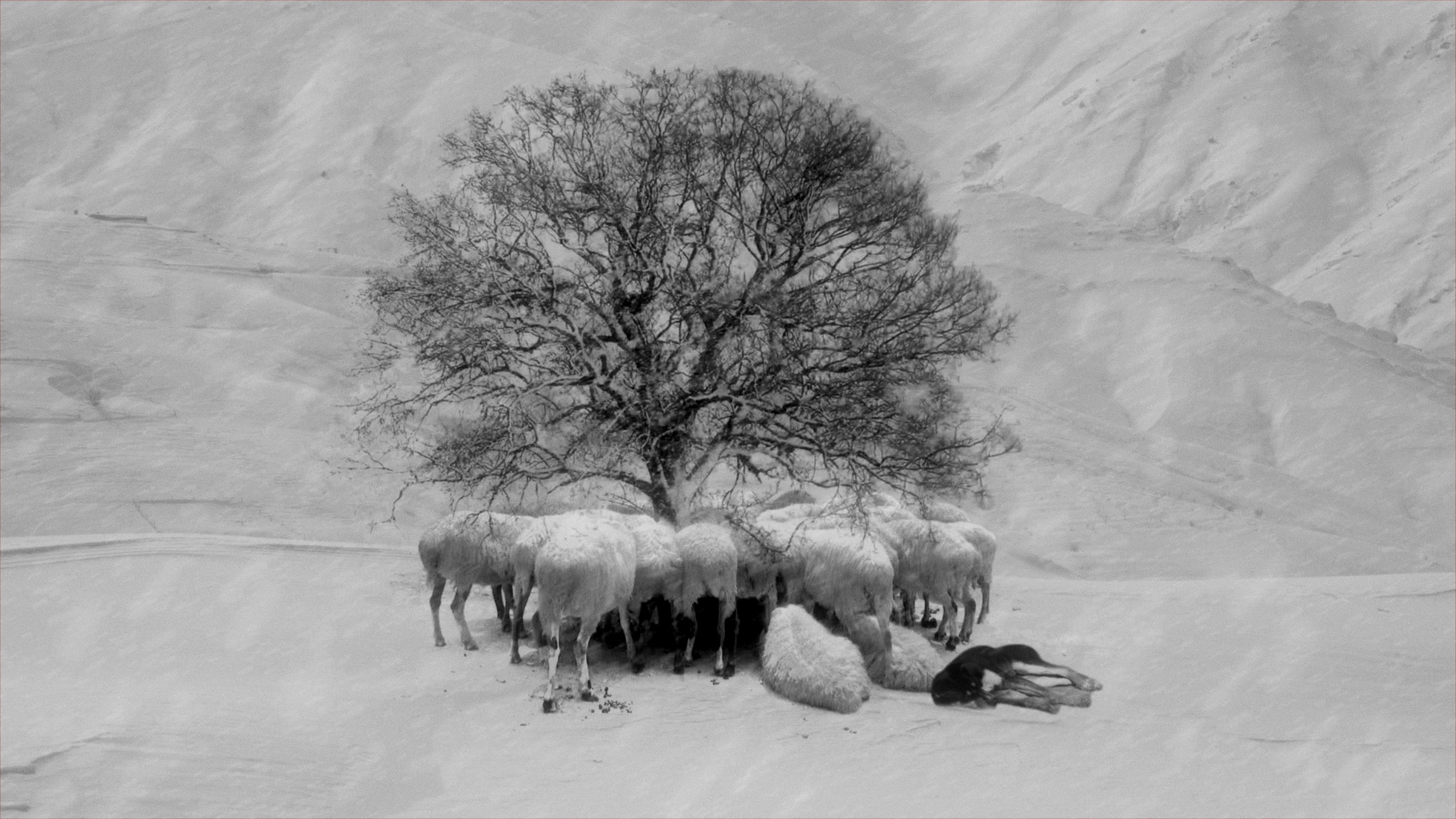
This is perhaps the most abstract distillation of Kiarostami’s cinema. On the surface, it resembles Five Dedicated to Ozu more than his other recent work, but it can also be taken in close connection with his other digitial films as a meditation on the ontology of images in the digital age. Kiarostami takes one painting and 23 photographs and animates them using superimposition and digital animation. Glitches are often unfixed, which highlights the artificiality of certain elements of the images. An interest that pervades all of Kiarostami’s work is the function of frames in directing the attention of the viewer. He has said that it’s hard to get people to really look at something, and it seems to help a great deal of you put a frame around it. His films are full of imbedded frames: car windows, doorways, mirrors, etc. I take the title of the film to be a pun connecting a frame of film with a frame of the sort that encloses an image. Each of the 24 frames features a frame: windows, a rectangular arrangement of trees, a fence, the ocean and horizon, etc.
22) Silence (Scorsese, 2016)

Some of Scorsese’s best movies are about faith, and in particular the struggle to preserve faith through trials and temptations. Silence completes the trilogy about challenges to faith that began with The Last Temptation of Christ and Kundun. It’s based on the same material as the 1971 Shinoda film with the same title, but the Scorsese film is more interested in the Catholic side of the story while the Shinoda film is more interested in the Japanese side.
Silence about Jesuit missionaries in Japan who are compelled to abandon their faith under threat of torture and death. It’s a harrowing film, but also very beautiful. Andrew Garfield is surprisingly great. It’s not an easy film to approach, but once I actually got myself to sit down in front of it I was fully enraptured.
23) A Lullaby to the Sorrowful Mystery (Diaz, 2016)


It’s an 8-hour opus about the Philippine Revolution that weaves historic events, a famous novel, and folklore together into a surreal narrative with two main branches, one male-centric and one female-centric. The male branch eventually involves transporting a dying man an absurd distance while the female branch focuses on a search in the mountains for the body of revolutionary hero Andrés Bonifacio. The use of high contrast black and white is stunning, even compared to Diaz’s other films, and the expressionistic imagery is in a league of its own. I had to pause it multiple times to read up on the history of the Philippine Revolution (which I already knew a good deal about but not enough), the novel El filibusterismo, and the folklore concerning Bernardo Carpio and tikbalangs. I would advise doing some googling beforehand.
24) Norte, the End of History (Diaz, 2013)

Certainly the best place to start with Lav Diaz. It’s missing his trademark high contrast B&W, but it has by far the most engaging narrative of any of his long form works and it’s only 250 minutes long. It’s downright entertaining compared to his more typical stuff. It’s a revisionary Crime and Punishment that interrogates the relationship between the intelligentsia and the peasantry and replaces Dostoevsky’s spiritual optimism with an apocalyptic negativism about the movement of history. It might be the most pessimistic film of the decade.
25) Essential Killing (Skolimowski, 2010)

Elemental cinema. Vincent Gallo plays a Taliban fighter who is captured and then escapes in a snowy European wilderness. There’s very little context or dialogue. It’s just a focused study of a man in an impossible situation with an absolute will to survive. Turn off the lights and preempt any possible disruptions. This is about as intense as movies get. By the end I was standing bolt upright holding my breath. The images of blood on snow are unforgettable.
26) Guilty as Romance (Uncut Version) (Sono, 2011)
The proper film is 145 minutes long. There is also a 113 minute version that should absolutely be avoided.
My favorite exploitation movie of the decade. It’s a pinku Belle de Jour combined with a gory serial killer police procedural and it centrally involves Kafka’s The Castle. It centers on the relationship between a bored housewife and a female college professor who moonlights as a street prostitute. All content warnings apply, this is a very transgressive movie.
27) Life Without Principle (To, 2011)

A riff on Cassavetes’ Killing of a Chinese Bookie, set at the onset of the global financial crisis. It puts dreck like The Big Short to shame. Don’t expect To’s usual fireworks, there’s almost no action. This is a focused morality play about the way the amoral ravenousness of the global financial system plays out in the lives of particular individuals. It’s one of four movies that To made this decade examining the soul-killing forces exerted on upwardly mobile young professionals under 21st century capitalism. The other three appear as honorable mentions below: Office and Don’t Go Breaking My Heart 1&2.
28) The Wolf of Wall Street (Scorsese, 2013)

The exhilaration of being horrible. No movie this decade has this level of propulsive energy. It took courage for Scorsese not to moralize. As though he needed to!
29) The Irishman (Scorsese, 2019)
I don’t know where to put this. I expect I’ll need a few more viewings and a long period of reflection before my opinion of it crystalizes, but here’s a guess for now. It’s grim and fatalistic, overflowing with great acting.
30) SPL 2: A Time for Consequences [aka Kill Zone 2] (Cheang, 2015)
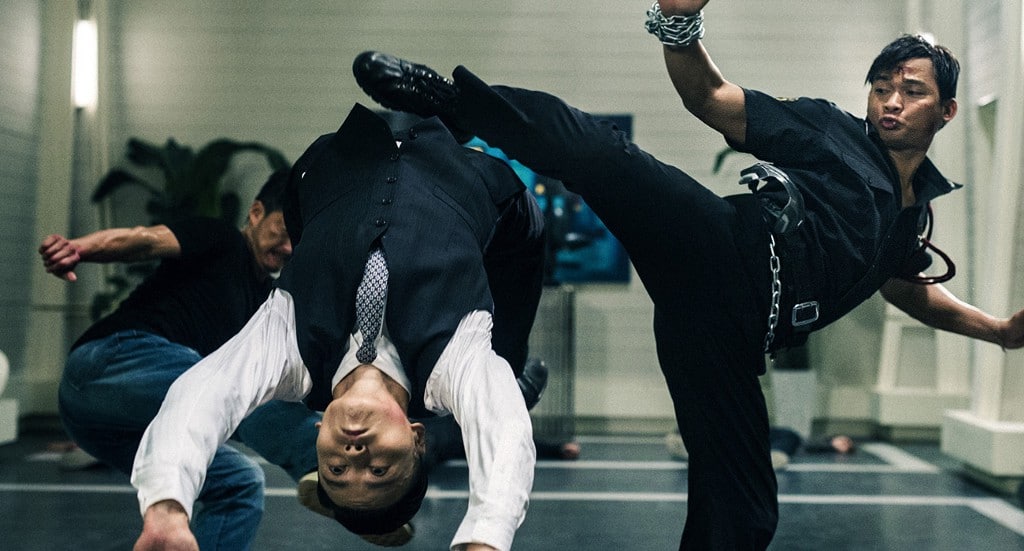
The best action movie of the decade. The black market trade in human organs is perfect subject matter for Cheang’s horror-influenced, brutal approach to Heroic Bloodshed. Tony Jaa and Wu Jing are two of the best martial artists in movies today and this is a stunning showcase for their skills. Louis Koo is unforgettable playing against type as the waifish villain. And you better believe there’s a CGI wolf.
31) Drug War (To, 2012)

Lean and nasty. This was produced in mainland China, and To had to contend with government censors. It’s amazing how effectively he manages to critique Chinese authoritarianism given the circumstances. The driving force of the narrative is China’s draconian drug laws and the automatic death penalty for meth distribution. This gives meth traffickers an absolute incentive not to be captured alive and guarantees a maximally bloody drug war.
32) Bastards (Denis, 2013)

This might have the blackest dark heart of darkness of any noir ever. A man who has mostly forsaken connections with his rotten family of origin is summoned back by his sister when his niece is the victim of a horrific sexual assault. Like many noirs, it’s a march towards annihilation dressed up as a search for answers. Denis’ use of the digital video here dials up the sleazy feel of the various poorly lit spaces and dens of iniquity. Many content warnings apply, including the decade’s most disturbing use of a prop.
33) La flor (Llinás, 2018)

This is the work of a deranged madman. I would certainly advise starting with Argentinian director Mariano Llinás’ first film, Extraordinary Stories, which is a four-hour movie consisting of three stories about piecing someone’s life together from their insane notebooks and maps (and sometimes getting it wrong). If you can’t handle that, forget about La Flor, which is 14 hours long and the most batshit movie of the decade. At one point maybe 2/3 of the way through the director comes out and thanks the audience for sticking with the movie. It has six parts, very uneven in length. The first four parts each contain the beginning and middle of a story but leave off before the ending. The fifth part is a full remake of Renoir’s A Day in the Country, which is itself an unfinished film. The sixth part begins in the middle and reaches a conclusion. The movie as a whole features four actresses, though there are tangents that they are left out of. The first part is a B movie about scientists investigating a cursed mummy, the second part combines a story about a musical couple with a story about a secret society trying to derive the secret to eternal life from the venom of a rare scorpion, the third part is a spy movie about four female spies where we get asbsurdly long digressions explaining the backstory of each, the fourth part goes off the rails into metafiction and returns to the themes of Extraordinary Stories, and by this point you’re like “ok fine, sure let’s just do a remake of A Day in the Country.” And then there’s that ending…
34) Good Time (Safdie Brothers, 2017)

A throbbing, hallucinatory descent into hell. It’s one of the most intense movies of the decade and the score from Oneohtrix Point Never is pure fire. Good Time makes me feel enthralled about cinema.
35) On the Beach at Night Alone (Hong, 2017)

Hong made a bunch of movies this decade starring Kim Min-hee about his real-life affair with Kim Min-hee. This is perhaps the most straightforward of the bunch, but also the most emotionally resonant. Kim is an exquisitely subtle actress and this film gives her the space to really show off what she is capable of. Hong likes to play with titles and the expectations they create, and knowing where Kim will eventually end up builds an odd sort of suspense. We imagine what lies beneath the veneer she puts up for others and what will be revealed when she’s finally on the beach at night alone.
36) Phoenix (Petzold, 2014)

Petzold’s recent films all take a core idea from some classic film and build a quietly devastating drama around it. Phoenix is Holocaust Vertigo and it will rip your heart out of your chest and show it to you. Nina Hoss is extraordinary.
37) Lover for a Day (Garrel, 2017)
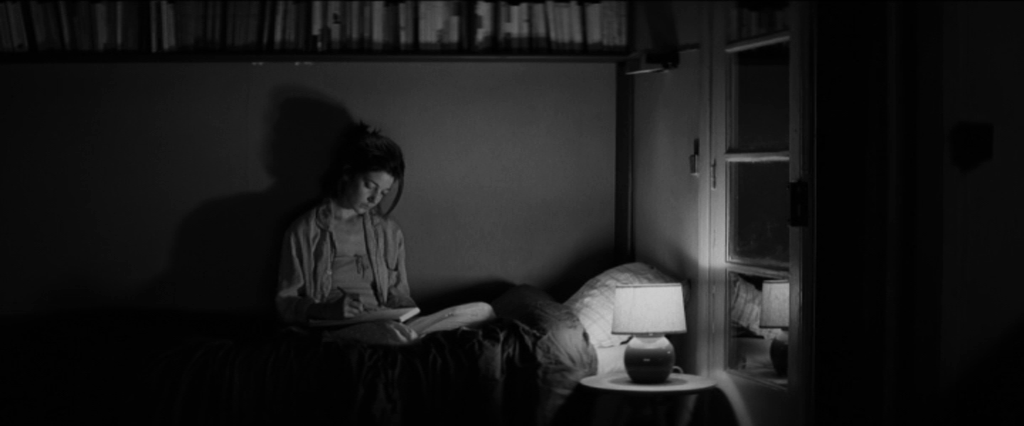
One of the most beautiful films of the decade. I underrated it when I did my previous Garrel write-up, because I watched it alongside nearly his entire filmography and it is quite straightforward compared to his earlier works. I revisited it recently and it looks far more luminous against the comparison class of films from the last decade. It is indeed a simple film by Garrel’s standards, but this simplicity is integral to what he’s trying to achieve. He’s stripping his cinema down to the bare essentials: human bodies, light, 35mm B&W, and a palette of basic emotions. 76 minutes of minimalist perfection.
38) The Assassin (Hou, 2015)

Also one of the most beautiful films of the decade. Hou is a filmmaker of quiet contemplation, whereas wuxia is a genre of sensory overload. This antinomy is at the center of this film, in much the same way as the tension between Hou’s style and the club scene is at the center of Millennium Mambo. All the shots through gauzy fabric are just astonishing.
39) Museum Hours (Cohen, 2012)

Philosophy of art colleagues take note: here’s your movie. It centers around the Kunsthistorisches Museum in Vienna. The narrator/co-lead is a thoughtful museum security guard who keeps to himself and enjoys the quiet and the chance to commune with art—especially the Bruegel paintings. The other lead is a Canadian woman who is visiting Vienna while her cousin is ill in the hospital. She spends her days wandering the museum and eventually the two become friends. There aren’t many events beyond the two leads hanging around and talking, but this is an exceptionally rich film. A visiting lecturer explains at length that one reason Bruegel is so important is that he documented peasant life at a time when such things weren’t documented. Although much of the film is spent in the museum, it’s also a city symphony that takes us on a tour of Vienna. Extrapolating from the musings about Bruegel, Cohen explores at length the possibility of looking at scenes from everyday life the way we look at paintings. It’s also a film about the way that art and shared aesthetic experiences can bring people together and create a context for rich and valuable interaction. And on top of all this, it’s a celebration of public institutions that make great art accessible for people outside the upper class.
40) First Reformed (Schrader, 2017)
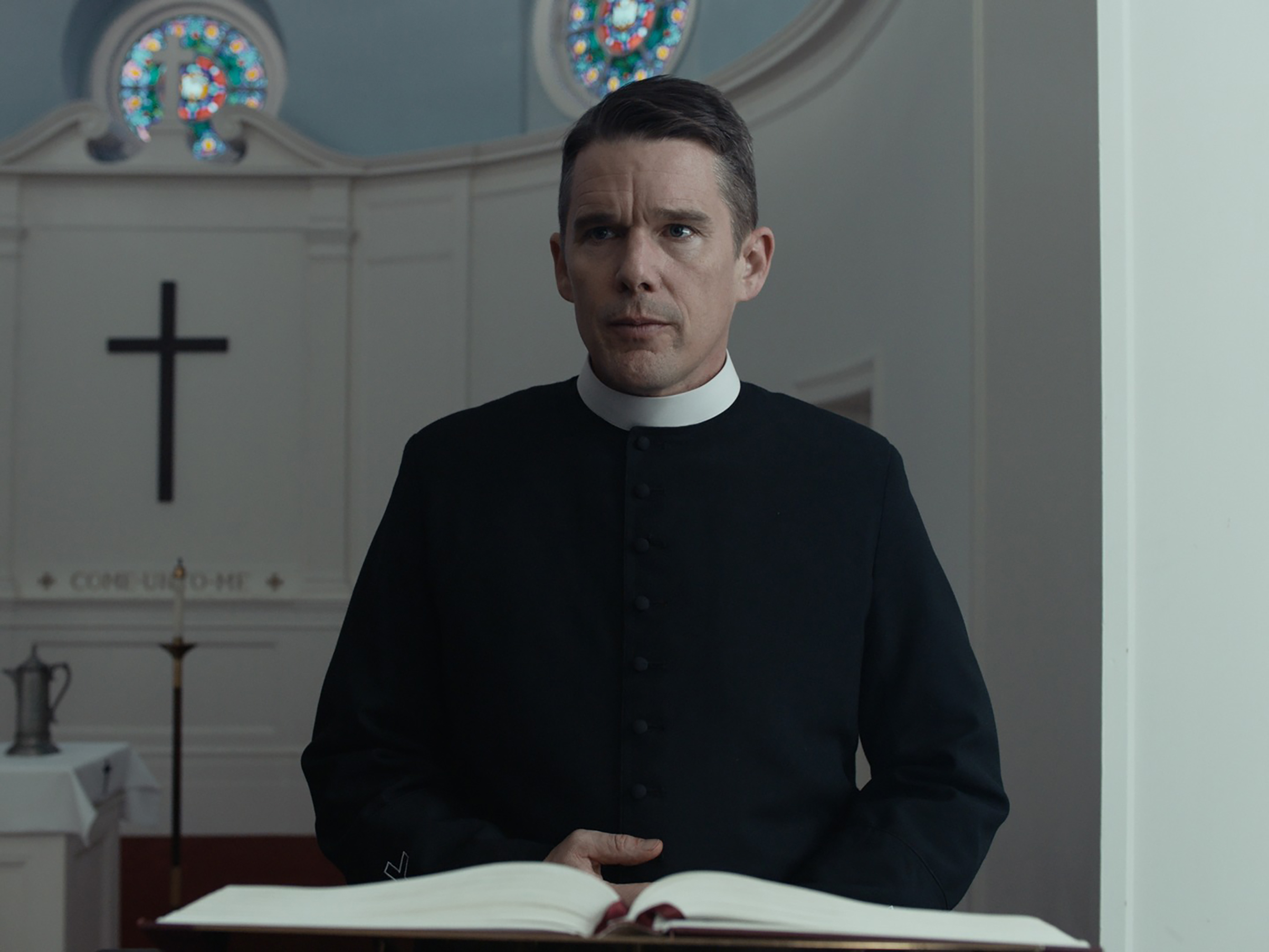
Here I would just send you to Francey Russell’s excellent piece on the film, which articulates its merits far better than I could. The one thing I want to add to discourse surrounding First Reformed is that discussion of its many influences (including Diary of a Country Priest, Winter Light, The Sacrifice, and Ordet) ought to consider Bresson’s The Devil, Probably, which I take to be central to what Schrader is up to here.
41) Right Now, Wrong Then (Hong, 2015)

Another Hong film starring Kim Min-hee, but far more conceptual than On the Beach at Night Alone. A film director visits Suwon to screen his film at a festival but arrives a day early and spends the extra time hanging out with a young painter. The film tells the same basic story twice with one major difference: the first time the director tries to observe various social norms, whereas the second time he speaks and acts without any filters.
42) The Lords of Salem (Zombie, 2012)

It was a good decade for witch horror. This was the best witch movie, followed by Hagazussa: A Heathen’s Curse, followed by The Witch. This is a moody slow burn that rewards patience with thrilling satanic imagery. Filmed in 2.4:1 on 35mm but looking just as grimy as his 16mm flicks, I think it’s easily Zombie’s best and the best horror film of the decade.
43) Stray Dogs (Tsai, 2013)

Tsai Ming-liang’s last feature film (he claims). It is very challenging. It’s a threadbare, surreal portrait of people living ghost-like lives on the margins of society and it’s not afraid to hold a painful moment far past the breaking point. I strongly prefer this to trendier attempts to approach similar subject matter through satire and gimmicky cleverness.
44) Twixt (Coppola, 2011)

This tripped out horror gem was inspired by one of Coppola’s own nightmares. Val Kilmer plays Hall Baltimore, a writer of pulpy horror novels who lost his daughter in a speedboating accident (the exact same way Coppola’s son Gian-Carlo died). While trying to sling witch-hunter books at a hardware store, he meets Sheriff Bobby LaGrange (an utterly fantastic Bruce Dern), who draws him into a local murder mystery involving a vampire cult. Coppola relates Hall Baltimore’s huckster status to his own late career marginalization: this is a minor masterpiece that knows it’s headed to the bargain DVD bin.
45) Only God Forgives (Refn, 2013)
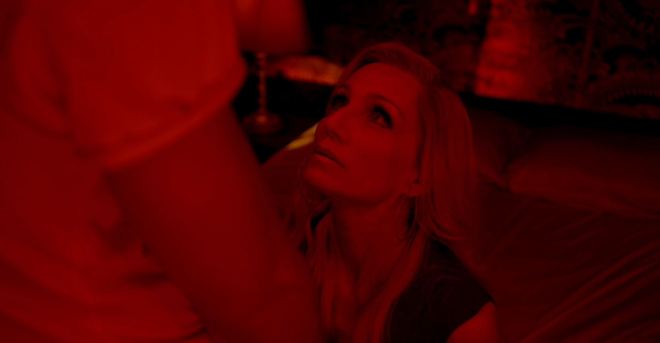
My favorite Refn film by far (but still not as good as his series Too Old to Die Young). It’s a neon pink martial arts film set in Thailand. Many content warnings apply. This is the central part of the trilogy that begins with Drive and ends with The Neon Demon. Whereas the former is about a masculinity and the latter is about femininity, this is about emasculation (the transition between the two, as it were). There were some good mommies from hell this decade, but Kristin Scott Thomas has to be the best.
46) Unstoppable (Scott, 2010)

Tony Scott’s last film succeeds at every level, but what is perhaps most remarkable is the way it situates the action within the shitty workdays of ordinary people. Denzel Washington is being forced into early retirement, his wife his dead and his daughters are working at Hooters to pay their way through school, while Chris Pine is sleeping on his brother’s couch because he’s estranged from his wife. It’s understood that Pine is the sort of lower pay employee that the company is replacing lifers like Washington with. This sort of long term boosting of the bottom line without regard for the human cost is echoed in the fast-paced decisions that the company executives make as the crisis unfolds, where working people are treated as disposable and then left to clean up the mess. These power dynamics give the incredibly well-staged action a degree of poignancy unmatched in recent genre movies. Also: it’s a decidedly Hawksian film, and the train-chasing set pieces unmistakably evoke Hatari!.
47) From What Is Before (Diaz, 2014)

Six hours of Lav Diaz. It bears some comparison to Sátántangó but it has a linear structure. It begins in a remote village in the months leading up to the Marcos martial law era. Odd occurrences and bad omens foreshadow the coming atrocity. This is not Diaz’s most difficult movie, but it is very difficult. It is slow cinema to the bone, with few significant plot events relative to its running time. The subject matter ranges from unsettling to intensely disturbing. It’s got an unearthly feel and finds some truly upsetting images. Various content warnings apply. If you can handle this sort of thing, though, it’s definitely worth it. Follow it up with Diaz’s Season of the Devil, which is about the martial law era that followed upon the events depicted in this film.
48) White Material (Denis, 2009)

A difficult and confrontational film, my take is that it’s about Fanon’s idea that the colonized internalize and reenact the violence of the colonizer in the process of decolonization and also about the meaning of whiteness in such a context. Isabelle Huppert is great (as always), but Nicolas Duvauchelle may be even more unforgettable as her son.
49) Margaret (Extended Edition) (Lonergan, 2011)

The proper cut of this movie is 3 hours long. I definitely prefer it to the 2.5 hour version that was initially released. The longer version in particular has an Edward Yang quality, which is the highest compliment that can be paid to a movie like this. Peak Anna Paquin.
50) A Dangerous Method (Cronenberg, 2011)
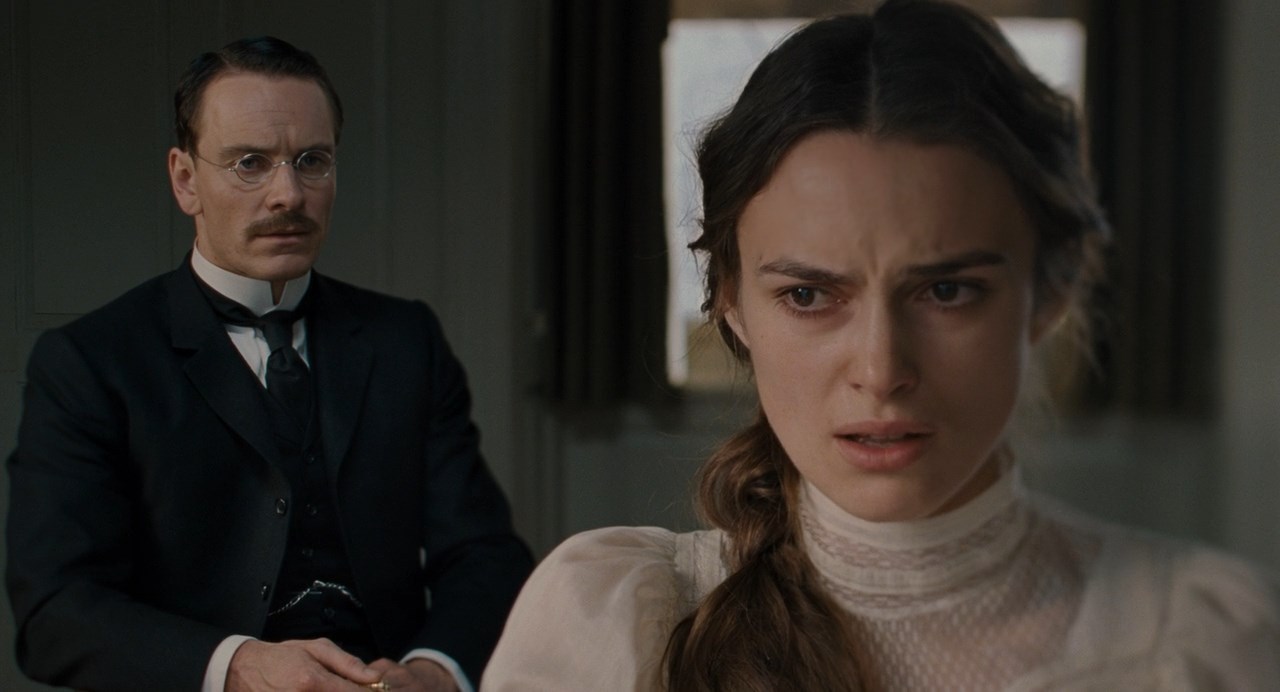
The wildest performance of the decade didn’t come from Nicolas Cage or John Travolta or even Tom Hardy. Nope: hands down, that award goes to Keira Knightly in this. It’s a fascinating film across the board, especially unusual in the way it is driven primarily by intellectual disagreements.
Honorable Mentions (unranked)
50 picks diversified by genre
Passion (De Palma, 2012)

I’m so grateful to have another erotic thriller from the master. It’s not peak De Palma, but it’s still better than almost everything else. First of all you’ve got the always great Rachel McAdams reprising her character from Mean Girls as a corporate marauder. Then you’ve got some kinky sex games involving creepy masks. And finally you have a full-on De Palma split screen set piece where he demonstrates his peerless sleight of hand by getting you to watch Debussy’s Afternoon of a Fawn on one side of the screen where the pivotal murder happens on the other side. *Italian chef kiss*
Office (To, 2015)

Written by and starring the great Sylvia Chang, it’s based on her stage musical. It’s about several intertwining stories involving a billion dollar company that’s about to go public when the financial crisis hits. It has by far the best set design of the decade and the whole thing is a marvel of staging. It’s not as biting as Life Without Principle, but it’s perhaps the decade’s greatest showcase of To’s craft.
Don’t Go Breaking My Heart (To, 2011); Don’t Go Breaking My Heart 2 (To, 2014)

These two really need to be taken together and so I snuck in an extra movie. They are both office romantic comedies, but the former is upbeat while the latter is one of To’s bleakest movies. The real purpose of the first one, as delightful as it is in its own right, is to set you up for the brutal sequel.
Blind Detective (To, 2013)

The third film in the trilogy that began with Mad Detective and Running on Karma. They can be watched in any order. All three depict individuals using supernatural mental powers to aid investigations. This one is a romantic comedy where a blind detective is brought out of retirement by a young female officer (Sami Cheng) to help with a cold case. It is zany, violent, and hilarious
Three (To, 2016)
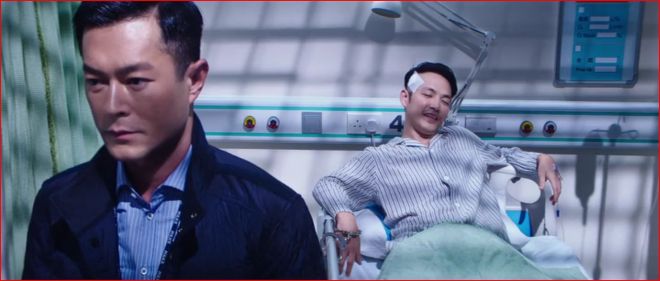
A recurrent trope in Johnnie To is the collision of three forces with different aims. In this case it’s medicine, law enforcement, and organized crime. A seriously wounded criminal is in the hospital, biding his time and postponing treatment to try to create a chance to escape while a cop looms over him. A female doctor jousts with the cop over the relative importance of saving his life vs. making sure justice is served. One thing that makes this movie special is its bizarre and enthusiastic hybridization of the medical procedural genre and the crime genre. There is tons and tons of graphic surgery. Another thing that makes it special is the absolutely berserk finale. It’s one of To’s greatest set pieces, and that’s really saying something.
American Sniper (Eastwood, 2014)
The most misunderstood movie of the decade. Its reception reveals that our tribalism has become so deep that it’s no longer even possible to thematize ambivalence across tribal lines without being widely misunderstood. I’m sorry, but anyone who thinks this movie is Chris Kyle hagiography is plainly wrong. I have trouble imagining how anyone could interpret it that way. Critics from the left complain about Islamophobia in the movie, but this is a clear case of careless viewers focusing on surface content and failing to think about how this content actually functions. American Sniper does depict Islamophobia, but it clearly does not endorse Islamophobia. The first part of the movie depicts Kyle’s activities as a sniper and focuses on the way that dehumanization of outsiders (i.e., Islamophobia) is predicated on deep bonds of interpersonal loyalty between soldiers. Kyle’s absolute commitment to protecting his brethren and dire capacity for violence are two sides of the same coin. Once Kyle leaves the military, he is a totally dysfunctional person. He has become so one-dimensional that he can only function in the expression of his narrow loyalty to fellow soldiers. The film dares to neither condemn nor embrace him. It mourns him, and what it primarily mourns is what military service did to him. It transformed his fundamentally admirable capacity for profound loyalty into something inhuman.
Hereafter (Eastwood, 2010)
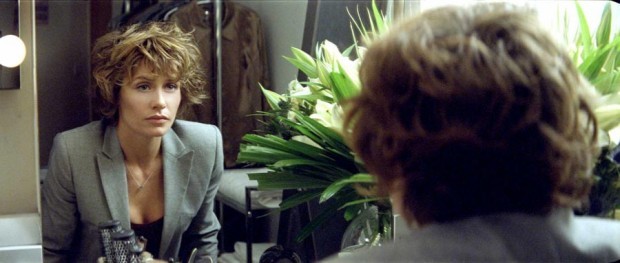
One of Eastwood’s strangest movies. It’s about big themes–death, the afterlife, fear of death, the impulse to believe in the afterlife—but it approaches these themes through strenuous attention to the sorts of small details that are normally left out of a movie like this in favor of sweeping romance and weepy drama. It focuses on three stories: one centering on a well off French woman (Cécile de France), one centering on a lower middle class American (Matt Damon), and one centering on an impoverished young boy in England. Each of the three has experienced a close brush with death; the Reaper cares not about social and political boundaries. What’s really remarkable about this movie is how unconventional it is in the aspects of these stories it focuses on. For instance, we spend a lot of time on Damon going to cooking school and the fact that he’s really into Dickens.
Resident Evil: Retribution (Anderson, 2012)

Retribution is focused and exhilarating: light on narrative and dense with both action and ideas. It is by far the most interesting entry in the series at the formal and conceptual level and it’s one of the best action movies of the decade. Alice is stuck in a simulation facility and must escape while coping with a crisis of self-knowledge that relates to vital philosophical questions about memory, authenticity and identity.
Pompeii (Anderson, 2014)
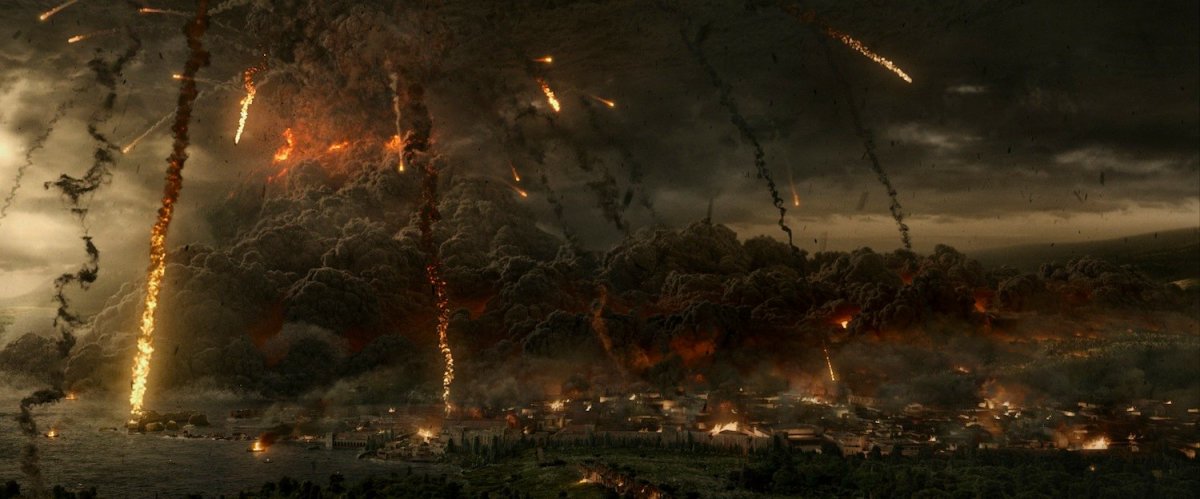
Fully a natural disaster movie and fully a gladiator movie (also a star-crossed lovers movie and a political fable), Pompei is a legit banger. I’m surprised it wasn’t more popular, given that it stars the beloved Jon Snow alongside Emily Browning AND has Kiefer Sutherland (!) as a villain.
Dogtooth (Lanthimos, 2010)

Nice and twisted with incredible dialogue in a sui generis style. This is Lanthimos at his most impishly original.
Universal Soldier: Day of Reckoning (Hyams, 2012)
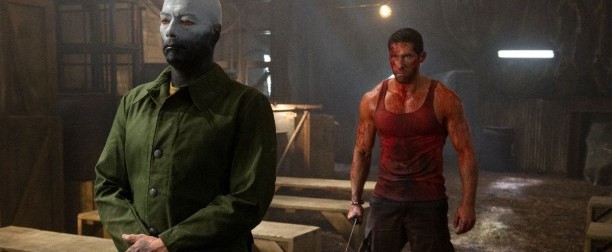
The best true B movie from America this decade. Easily. I can’t even believe how much immersive nightmarish atmosphere this achieves with its budget. No spoilers, but several higher profile sci-fi movies and TV shows have attempted the same premise and none have come close to this. Van Damme goes full Marlon Brando. And the score is so frickin’ good! Turn up your subwoofer.
Barbara (Petzold, 2012)

Petzold’s Klute, wherein a characteristically brilliant Nina Hoss is stuck in a podunk town under the watchful eye of the Stasi. It’s a small film, but not at all slight.
Lady J (aka Mademoiselle de Joncquières) (Mouret, 2018)
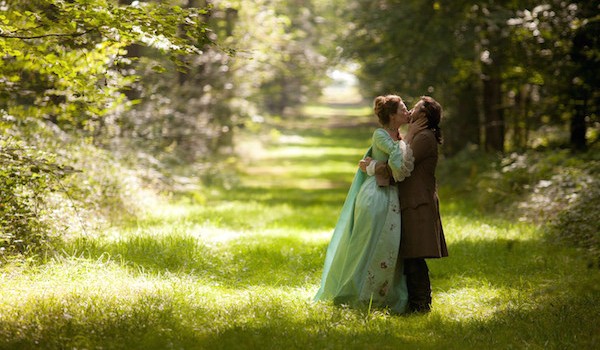
I complained at the time about The Favourite being nowhere near wicked enough and keeping its emotions too close to the surface. Mademoiselle de Joncquières is exactly the movie I wanted to see when I made this complaint. Based on the same Diderot story as Bresson and Cocteau’s collaboration Les Dames du Bois de Boulogne, it depicts a jilted woman’s cruel revenge plot. It keeps its emotions buried below a veneer of politeness so that when the underlying wickedness does surface, it is appropriately shocking. Cécile de France is as good as it gets. Mouret’s neoclassical mise-en-scène is ravishing throughout.
The Ghost Writer (Polanski, 2010)

A Hitchcockian wrong man movie by way of a Polanski slow burn. Ewan McGregor plays a ghostwriter who travels to Martha’s Vineyard to write the memoir of a Tony Blair stand-in played by Pierce Brosnan. While working on the project, he begins to suspect that his predecessor was murdered for uncovering a dangerous secret. This is one of the best modern political thrillers and also a very fine example of Polanski’s craft. What he does better than anyone else is build a sense of dread out of ostensibly benign details. If there’s a guy sweeping a porch in the periphery, Polanski will somehow render him obtrusively creepy without necessarily implicating him in any proper foreshadowing.
Shutter Island (Scorsese, 2010)

Scorsese draws extensively on Italian cinema throughout his body of work, but this is the one time when he’s gotten into Italian Exploitation territory. The reductive psychological diagnoses and the overly neat ending that renders all of the movie’s chaos legible are straight out of the giallo genre (thanks to Peter Labuza for this observation). This is one of Scorsese’s wildest, strangest, riskiest movies and it deserves recognition for its boldness and maniacal energy.
Road to Nowhere (Hellman, 2010)

A mystery wrapped in an enigma. Almost the entire film consists in a film within the film about the making of the very same film. A director making a movie about a woman’s disappearance unknowingly casts the very woman who went missing in the role of herself.
The Counselor (Director’s Cut) (Ridley Scott, 2013)

Who knew Ridley Scott could be this campy? The director’s cut of this is one of the most fun movies of the decade. It’s worth the price of admission just for Javier Bardem and Cameron Diaz’s scenery chewing.
The Skin I Live In (Almodóvar, 2011)
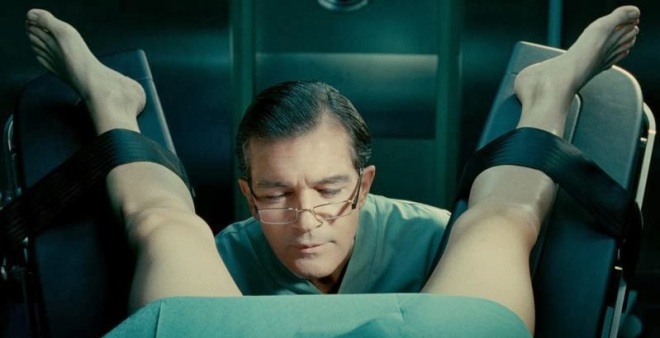
I like my Almodóvar movies maximally twisted, and this is definitely that. No spoilers, but many content warnings apply and I suspect that some people would find it gravely offensive. I think there’s room for debate on that, but in any case I find the transgressive flair thrilling. I’m with Pasolini: “To be scandalized is a pleasure.” A lot of Almodóvar is about translating the trashiest possible Euro-exploitation plots into polished art cinema, and nobody working today does it better than he does. I would advise going into this knowing as little as possible.
Hard to Be a God (German, 2013)
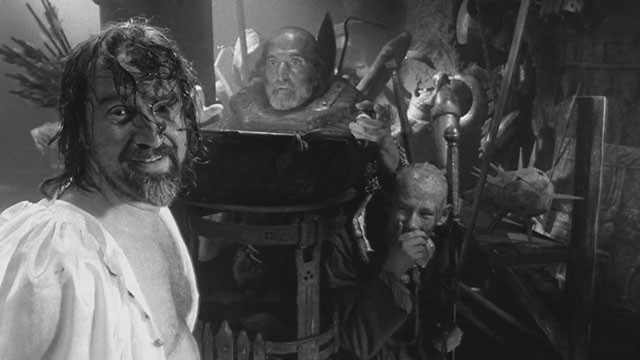
The gnarliest foray into medieval futurism since On the Silver Globe. It’s about a group of scientists living on a planet much like ours except the renaissance never happened and humankind is violently opposed to any sort of progress. The whole thing reeks of death and excrement. It came out of Putin’s Russia but it feels entirely appropriate to this decade in total.
Raw (Ducournau, 2016)

There are lots of movies about going away to school for the first time. What most of them undersell is the amount of bodily fluids and the general sense of bodily porosity involved. Raw spins these elements into a sort of vampire movie stripped of every genre trope. I’m impressed by how seamlessly it connects the exhilaration and horror of bodily awakening. Cannibalism has rarely been so appealing. Julia Ducournau is the young horror director who I am most excited to see more from.
Killer Joe (Friedkin, 2011)

The best Matthew McConaughey performance. It’s a southern-fried white trash exploitation noir based on a play by Tracy Letts. There are movies that are sleazier than this and movies that are stagier this but no movie that is at once this sleazy and this stagey. Many content warnings apply.
The Paperboy (Daniels, 2012)

Another sweaty, sleazy southern noir, this time in Florida. Nicole Kidman and John Cusack hit all-time highs, with delightful turns from Zac Efron and Macey Gray. And of course, it wouldn’t be a southern sleaze movie without McConaughey. I don’t know if the Cusack masturbation scene will ever be topped.
Unsane (Soderbergh, 2018)

It’s like Shock Corridor for the #metoo era, filmed on an iPhone. Soderbergh is remarkably effective at building a sense of confinement and powerlessness. Claire Foy is great. This is an immensely stressful movie to watch.
If Beale Street Could Talk (Jenkins, 2018)
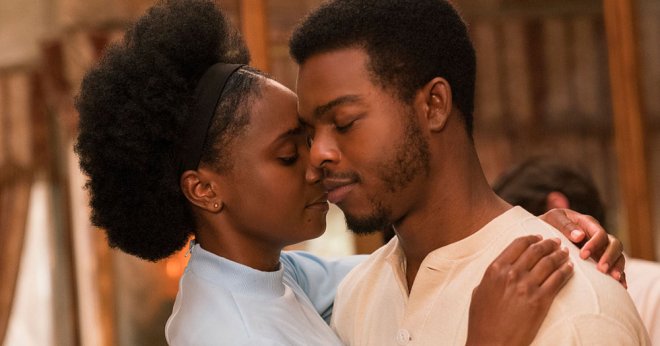
What I find so remarkable about this film is that despite being based on a James Baldwin novel and having a novelistic narrative, it is so expressive that you could remove all dialogue and narration and every bit of it would still be legible. Certain elements may seem overwrought, but they are proportionate if you think of Jenkins as deploying silent movie grammar. The villainous cop, for instance, is a silent movie fiend.
Transformers: Age of Extinction (Bay, 2014)
Bay’s best action movies are like 21st century Abel Gance. Gance would pack his movies so densely with technical tricks that the audience couldn’t possibly apprehend them all (e.g., 100 superimpositions when only 10 are distinguishable). Swap the imagery of the American military for Napoleon and there you go. This is my favorite entry in the series. No one plays a fake scientist better than Mark Wahlberg.
It’s certainly Bay’s wokest movie: Autobots as undocumented immigrants, simultaneously exploited as a resource and vilified, persecuted, and targeted for genocide. “There are no good aliens and bad aliens, there’s only us and them.” Humans nearly precipitate their own extinction through short-sighted greed while deep and nefarious connections fester between state apparatus and corporate overlords. There are Transformer hyenas! Autobots ride dinobots—a locus of ancient untapped power now freed from bondage—into battle to face a soulless facsimile of themselves. The action climax lasts an hour and a half. No fucks given about audience endurance for skull-rattling mech-combat.
13 Assassins (Miike, 2010)

An elite team of 12 assassins and a hunter attempt to kill the shogun’s sadistic half-brother, who is guarded by an army of 200+. The cast and action are terrific and this is a deeply satisfying genre movie.
As the Gods Will (Miike, 2014)

A lot of movies try to integrate a video game structure but few succeed as well as this one, which isn’t even based on a video game. The premise is the gods suddenly decide to intervene in human affairs, and what they do is teleport all the highschool students to these floating structures where they have to face a series of lethal challenges. There is massive carnage, but Miike uses red beads in place of most of the blood so it’s really not all that upsetting. It’s imaginative and very fun and works both as a horror movie and a high school comedy.
Fast Five (Lin, 2011)

The Oceans 11 of the series, it’s easily the best heist movie and the best car chase movie of the decade. The sequence where we round up a crack team is just delightful. The heist itself is absolutely thrilling and the various twists sustain a high level of suspense throughout. The main crew is great and Joaquim de Almeida is the best villain in the series.
The Fate of the Furious (Gray, 2017)

The primary overarching theme of the F&F series is that family loyalty is a superpower. This movie has in some ways been the most controversial entry, because fans have questioned whether Dom violates the code of family by shaking hands with Shaw (who killed Han, certainly a part of Dom’s family). I would argue that the “Justice for Han” contingent who dislike this entry are misguided, and thinking through the argument is a good way to see how interesting this movie actually is.
Shaw’s rehabilitation is set up in Furious 7 when Shaw and Dom mutually declare, “you shouldn’t have messed with a man’s family.” Shaw has the same code of family that Dom’s crew does. Dom’s decision to shake Shaw’s hand at the end of Fate of the Furious is grounded in the pair’s mutual recognition that they have both been motivated by the same code. It’s just as big of a concession for Shaw to forgive Dom’s transgression as vice versa. Let’s not forget how we got to this point: in a desperate situation, Dom saw that he and Shaw had a common enemy and he knew that Shaw would be a formidable ally. He reached out to Shaw through his mom, played by Helen Mirren (!), appealing to the code of family. Shaw delivered, and in the process won the audience’s sympathy with the adorable, hilarious, astonishing baby-soothing airplane shootout. When Dom shakes his hand, it’s not as the man who killed Han, it’s as the man who pulled off a miracle rescue of his son. Shaw contributed more to this rescue than any other character and he followed through on his promise even though it forced him to let his own quarry escape. Dom knows it, and you’re damn right he shakes his hand.
The Handmaiden (Park, 2016)

A very fine Fingersmith adaptation and one of the most purely and immediately pleasant cinematic experiences of the decade. Great cast, including Kim Min-hee, who also stars in the two Hong Sang-soo movies above.
Shin Godzilla (Anno and Higuchi, 2016)

The best Godzilla movie since the original 1954 Gojira. It throws information at you at a dizzying pace from the very beginning and then still manages to escalate to a hysterical crescendo of practical effects and Japanese collectivism. One thing I really dislike about 2019’s Godzilla: King of the Monsters is the way that it not only loses touch with the series’ origin as a postwar anti-nuclear weapons statement, but basically treats nukes as convenient batteries for a benevolent Godzilla. Shin Godzilla goes in a much more intelligent direction by instead relating Godzilla to a number of more recent disasters that have impacted Japan.
Pacific Rim (del Toro, 2013)
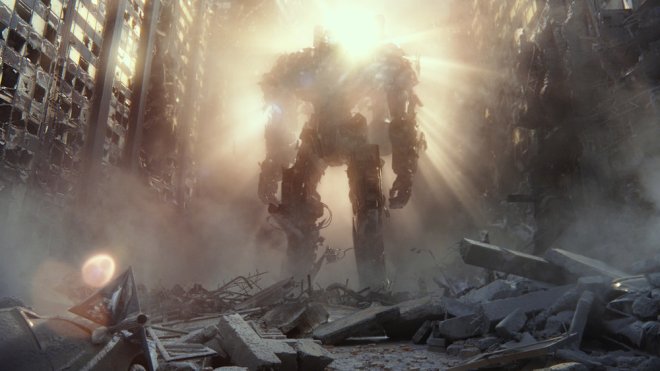
I couldn’t count the number of evenings when my sentiment has been, “what I really want right now is too watch Pacific Rim for the first time again.” It’s all the Robot Jox vs kaiju I ever wanted. Please pour this all over my face.
Love & Peace (Sono, 2015)
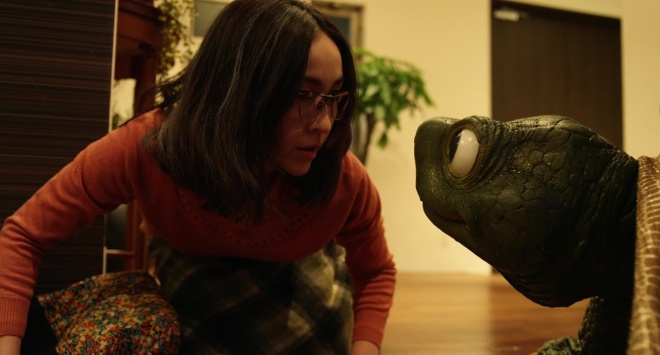
I picked Sono’s gnarly exploitation movie Guilty of Romance in my top 50 above. This is the exact opposite. Teenage Mutant Ninja Turtles meets Godzilla meets Toy Story, and it’s a rock opera AND a Christmas movie. It’s the most family-appropriate movie on this list.
Army of One (Charles, 2016)

The funniest comedy of the decade by a large margin and my favorite Nicolas Cage performance in recent memory. He plays a Trump supporter-type who has a vision that God wants him to go to Pakistan and single-handedly kill Osama bin Laden. The part at the beginning where he tromps around Home Depot giving unsolicited, casually racist advice to other customers is worth the price of admission all by itself.
Damsels in Distress (Stillman, 2011)

Now this is my kind of Greta Gerwig movie. She plays a sort of campus Don Quixote who leads a clique of absurd do-gooders on a quest to prevent suicides and start the next big dance craze. Endlessly droll, it’s one of my favorite comedies of the decade.
The Shallows (Collet-Serra, 2016)

Shark horror is my jam and this is top-tier shark horror (both 47 Meters Down movies are also very good—it was a solid decade in shark horror). Collet-Serra is better than just about anyone else at giving the viewer a clear sense of orientation in the space where the action takes place. Blake Lively is perfect as the resourceful, self-possessed protagonist.
Carlos (Assayas, 2010)

339 minute version. Wildly entertaining throughout, this does for 20th century internationalist leftist militants what Scorsese did for Italian-American gangsters.
Uncle Boonmee Who Can Recall His Past Lives (Weerasethakul, 2010)

The most accessible Weerasethakul flick and probably my personal favorite. His work is always hard to pin down and seems to emerge unfiltered from his subconscious. This one is engaging and imaginative throughout, full of ghosts and creatures pulled directly from the low budget fantasy TV shows he grew up with.
Jauja (Alonso, 2014)

A trippy, South American version of The Searchers where Viggo Mortensen plays a Danish captain in Argentina searching for his daughter, who has run off with a young soldier. This is my pick for the best use of landscape in a narrative film this decade.
Magic Mike XXL (Jacobs, 2015)
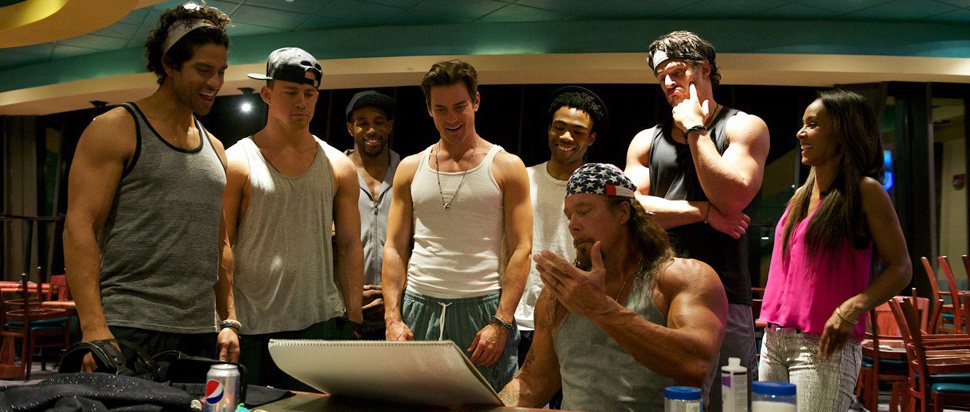
Very funny, very poignant, and replete with fantastic dancing. It’s about mitigating alienation in working class life through self-expression and community. The hangout movie—the movie that mostly just consists in people hanging out and talking—is a dying art. This is a great example. It’s a hangout movie plus dance numbers.
3 From Hell (Zombie, 2019)

We can all agree that ready-made cult cinema is the worst. The harder question is how to delineate between a real exploitation movie and canned junk in the post-ironic era. For me, Mandy is a clear example of ready-made cult cinema. It’s too self-conscious and it tries too hard. I know some will disagree but my emphatic stance is that 3 From Hell is the real thing. It was made under genuine conditions of economic constraint (Zombie’s previous 31 was crowdfunded and he only got money for this because he agreed to make a sequel to an established franchise with a built-in audience) and comes from a place of sincere irreverence and disdain for polite constraints.
It’s part women-in-prison movie, part hangout movie, and part fugitives-on-the-lam movie. Many movies interrogate our love for villains and outlaws. Many of them land on moralistic, critical explanations. 3 From Hell is a refreshing hot shower of unapologetic immoralism. Why do we love villains and outlaws? Because they are awesome. This is mean, grimy, anti-elevated horror and I love it. This is definitely not for everyone. Start with House of 1000 Corpses and The Devils Rejects. If you don’t love those, forget about it.
Flight (Zemeckis, 2012)

No one crashes a plane like Zemeckis. This is one of the best and truest movies about alcoholism, and Denzel Washington is immense.
The Color Wheel (Perry, 2011)
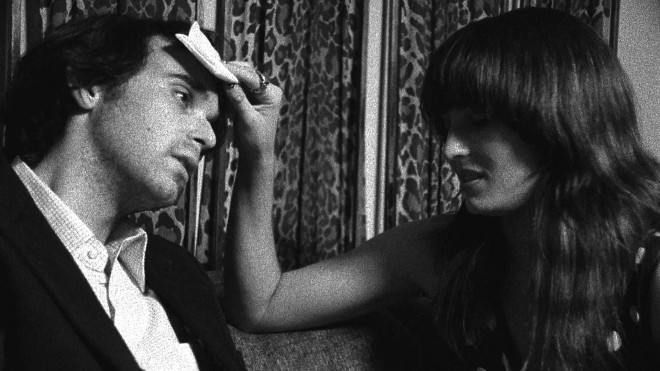
Perry trades in Post-Mumblecore Cinema of Cruelty, where he traps you with totally unbearable characters for longer than you can reasonably endure. This is easily his best and least painful movie, though it’s plenty abrasive. It depicts a brother and sister with a creepily intimate relationship going on a road trip to retrieve the sister’s belongings from the house of her ex-boyfriend/former professor. It’s a twisted movie and very dear to my heart.
Mr. Turner (Leigh, 2014)

I don’t know how biographically accurate it is, but I really don’t care. I love Timothy Spall and his performance here is singular. He explores the tension between the ugliness of painter William Turner’s disposition and the beauty of his work.
The Woman Who Left (Diaz, 2016)

This is based on Tolstoy’s short story “God Sees the Truth, But Waits.” Much as he did in his revisionary Dostoevsky adaptation, Norte, The End of History (in the top 50 above), Diaz sheds Tolstoy’s spiritual optimism and takes the story in an entirely different direction. In this version, a woman who has been imprisoned for 30 years is released. She learns that she was framed by her jealous, wealthy ex-boyfriend. She moves to his neighborhood intent on taking revenge. News broadcasts repeatedly announce an epidemic of kidnappings in the Philippines and rich people like the protagonist’s ex live behind considerable fortifications and only leave the house with a crew of armed guards. The protagonist is left to wait and bide her time. Over the course of this nearly four hour movie, she naturally slides into the role of caretaker for the poor people who live side-by-side with the wealthy elite. It’s hard for me to take the critique of capitalism in a movie like Parasite seriously when I compare it to something like this. While Parasite focuses on inequity in creature comforts in a rich country, The Woman Who Left focuses on the way that violence and rape are part of the baseline living standard of the global poor (and are taken for granted while public discourse frets about any threat whatsoever to the rich). Attempts to claim justice or assert dignity are only met with the swift and violent exercise of state power.
Season of the Devil (Diaz, 2018)

A four hour musical about the martial law era in the Philippines. Imagine Trump supporters were given automatic weapons and effectively unlimited authority to keep the rest of us in line (and unlimited latitude to interpret what that means). Add the background context of a long post-colonial hangover and that’s basically a glimpse of the Marcos martial law era. Set that shit to music and that’s this movie. It’s about a woman who moves to a rural village to set up a medical practice but later disappears, and her husband’s search for answers about what happened to her (based on true events). There is an emphasis throughout on the way fascists exploit superstition to control the masses. Diaz might be the only filmmaker today whose work is as confrontational as the global political landscape warrants. This is an intensely disturbing film and the sung dialogue is extra, extra creepy.
Li’l Quinquin (Dumont, 2014)

I never liked Bruno Dumont’s dramas but wow, do I love his comedies. This is certainly the strangest comedy I saw this decade. It’s an absurdist, deadpan 3.5 hour romp that follows two policemen as they investigate a series of bizarre killings where corpses were found inside of cows. They are pestered along the way by a gang of kids. This certainly wins the award for Best Use of Eyebrows.
Leviathan (Castaing-Taylor and Paravel, 2012)

The filmmakers (associated with the Sensory Ethnography Lab at Harvard University) put a couple hundred Go Pro cameras on a Massachusetts-based commercial fishing boat and edited together a collage of footage that captures sensory details of life aboard the boat and fishing practices. There is no narration or interviews or exposition (all of which are usually turn offs for me in a documentary). There’s no moralizing about fishing or the environment or working conditions, but this is not to say that the movie paints a rosy picture. It is a swirling, churning, often disturbing work that might be labeled “Nautical Gothic.” It has that Melvillean man-against-nature darkness and doesn’t shy away from gruesome imagery of dying fish and evidence of polluted oceans.
Almayer’s Folly (Akerman, 2011)

Chantal Akerman goes Herzog in this Joseph Conrad adaptation that moves the story from the late 19th century to the 1950’s. Almayer is a virulently racist Dutch trader in Malaysia who obsesses over the racial identity of the daughter he had with a Malay woman who he detests. It is a hypnotic tale of colonial purgatory that deserves much more attention than it’s gotten in America.
Split (Shyamalan, 2016)

I really admire how bonkers this manages to be while still being commercial enough to make $280 million dollars and how transgressive it manages to be within the strictures of a PG-13 rating. James McAvoy and Anya Taylor-Joy are both phenomenal. I didn’t even know I liked McAvoy till I saw this. One of Shyamalan’s best.


